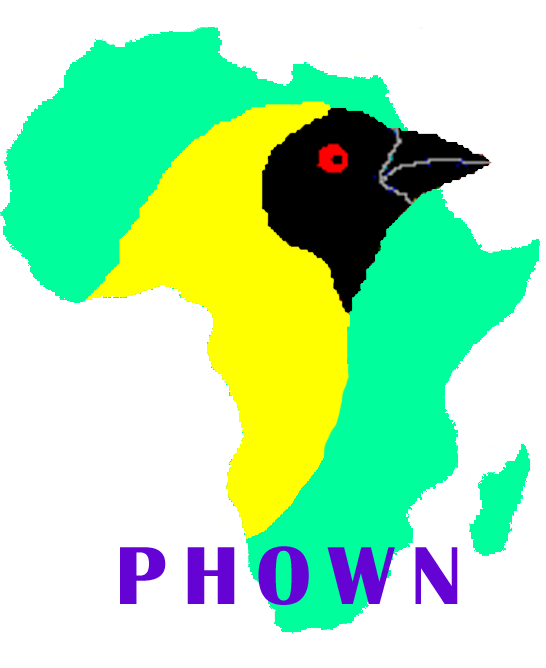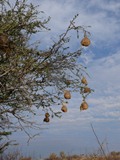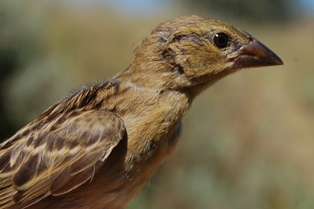Weaver news
|
Between us we ringed 141 Chestnut Weavers and every one of them was a juvenile bird. This suggests to me that the adults have left for where ever they go and the juveniles have remained behind. We know that the birds bred in the general vicinity but I am not aware of any colonies in the immediate vicinity of the ringing site. I don’t find any mention in Roberts VII of the adult birds departing before the juveniles. While I have caught small numbers of birds over the winter months in Windhoek before I can’t recall having noticed any obvious juveniles amongst them. Another thing that struck us was how many of these birds had ticks on their heads. One bird had five ticks. We sometimes find ticks on birds but not in these numbers." This is a remarkable catch. SAFRINGs database shows that this catch rate has only been exceeded or equalled 3 times. On 6/12/2004 Tim Osborne ringed 166 Chestnut Weavers on Windpoort Farm, on 2/02/2008 Dirk Heinrich ringed 146 on Teufelsbach and on 26/12/2004 Dirk ringed 141 on Wiese. Tim caught adults and unaged birds while Dirk caught only adults at breeding colonies. Neil and Gudrun's catch of 141 juveniles is the greatest for this age class. Previously the largest catch of juvenile Chestnut Weavers on one day was 14, on 19/04/2004. These juveniles probably hatched at Teufelsbach where many colonies were established earlier this year - some of these are in PHOWN (eg VM 2315). Ticks have been recorded on a variety of weaver species, but I have not found a record of ticks on Chestnut Weavers. The ticks probably got on the birds while the weavers were foraging on grass seeds. It is interesting that when the juveniles where independent, that they moved together in large flocks separate from the adults. Bird ringing can provide insights into bird ecology! |











 On 18 May Neil Thomson of Windhoek sent me this email: "Yesterday was a public holiday here (yes – we still have Ascension Day) and Gudrun and I went ringing at Anton’s 'farm.' I pointed it out to you on the way to Teufelsbach – the place where we sent Graham & Eben. About 40 km north of Windhoek.
On 18 May Neil Thomson of Windhoek sent me this email: "Yesterday was a public holiday here (yes – we still have Ascension Day) and Gudrun and I went ringing at Anton’s 'farm.' I pointed it out to you on the way to Teufelsbach – the place where we sent Graham & Eben. About 40 km north of Windhoek.